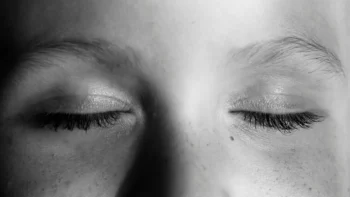LASIK eye surgery is one of the most popular elective surgeries in the country. Since the FDA first approved it, more than 10 million Americans have gotten LASIK to correct their vision. It’s one of the safest and most effective vision correction treatments.
However, like all surgical procedures, LASIK surgery can come with some risks. While less than 1% of all LASIK patients will experience post-surgery complications, side effects are still possible. From dry eyes to light sensitivity, some side effects will go away within days or months. But others can last longer and require follow-up treatment.
In this article, we’ll cover everything you need to know about the side effects you might experience after getting LASIK in Las Vegas and how to manage them.
Benefits of LASIK
Laser-assisted in situ keratomileusis (LASIK) is eye surgery to correct common vision problems, like nearsightedness, farsightedness, and astigmatism. The surgeon cuts a small flap in the cornea during the procedure and reshapes the tissue with a special laser.
It’s easy to see why many find LASIK appealing. It offers the chance for freedom from glasses and contacts. You’ll be able to see 20/20 — or even better — without the daily hassle of wearing corrective lenses.
While the surgery costs money upfront, it can save you money over time. Instead of getting new eyeglasses and contact lenses every year, in addition to bottles of cleaning solution or glasses cases, you can leave the expenses behind.
Side Effects From LASIK: What You Need To Know
Before we get into the side effects, it’s important to note that complications from LASIK surgery are very unlikely. Patients can develop more serious issues after surgery, like chronic pain or nerve damage, but these outcomes are extremely rare — less than 1%.
Side effects, however, are typical of any surgery. As the eyes begin to heal, you may experience side effects as a natural part of your body recovering and rebuilding. Many of these effects are mild, short-term symptoms.
It can take up to six months for your vision to stabilize after LASIK. During this time, you might experience:
- Dry or itchy eyes. For a few days after surgery, it’s common to experience dry, itchy, and uncomfortable eyes. The procedure can also decrease tear production for up to six months, which may need to be treated with over-the-counter or prescription eye drops.
- Light sensitivity, glare, and double vision. You might notice light sensitivity and mild anomalies like glare or double vision for days or weeks after the procedure. In some cases, patients experience a “halo effect” around lights.
- Blurry vision. As your vision stabilizes, you might still notice mild blurriness for the days or even weeks after the procedure.
- Infection or tearing. The surgeon will make a small cut during the procedure, which means there’s a very low risk of infection or tearing as the cut heals.
- Astigmatism. In rare cases, irregularities in the cornea might lead to vision issues like astigmatism. Patients may need to undergo further treatment to correct this issue.
It’s important to stay in contact with your ophthalmologist in the months following your LASIK surgery and attend all follow-up sessions. Be honest about any symptoms you’re experiencing to address potential issues before they worsen.
Preventing Side Effects and Complications
Before you can be approved for the surgery, you’ll have a consultation with a medical professional. Your doctor will review your medical history, do a thorough eye exam, and measure your cornea to make sure LASIK is the right choice for you.
If you have any of the following conditions, you might be at high risk for complications and side effects:
- Autoimmune disorders
- Dry eye syndrome
- Eye injury, cataracts, or glaucoma
- Thin corneas
- Very large pupils
Remember that your doctor won’t approve you for surgery unless you’re the best possible candidate. This will help lower the risk of developing longer-term side effects or complications. Always follow pre-and-postoperative instructions to reduce risk further.
Tips for Dealing With Side Effects
Some side effects of LASIK surgery may be inevitable. However, there are still some aftercare tips that can help relieve discomfort, light sensitivity, or dry eyes.
For a few days post-surgery, it’s important to avoid bright lights and direct sunglasses. If going outside, remember to wear sunglasses and a hat with a brim to protect your eyes. To keep yourself comfortable, you can lower the lights around the house and keep screens as dim as possible.
Try to avoid rubbing your eyes. Stay out of dry, dusty, or smoky areas, and wear eye protection like glasses or goggles.
Dry eyes or other minor discomfort is common during the healing process. Over-the-counter medications, like hydrating drops or liquid tears, can help keep your eyes lubricated and comfortable. Your doctor may give you some post-op eye drops to reduce these symptoms.
If you notice any discomfort or sensitivity, try to rest as much as possible and keep your eyes closed. You can always use a lightweight cold compress over your eye to soothe any irritation.
Managing Side Effects of LASIK in Las Vegas
All surgeries have risks and benefits — LASIK eye surgery is no different. While the risk is low, you could still develop some uncomfortable side effects or changes in vision. Your doctor can walk you through the recovery process and address any questions about how your eyes are healing. The most important part of ensuring a safe and comfortable healing process is to work with the right highly qualified surgeon. At Brimhall Eye, we’ll walk you through the process step by step to make sure your procedure is as seamless and comfortable as possible. If you’re looking for a doctor you can trust with your eyes, don’t hesitate to contact us to set up a consultation.





